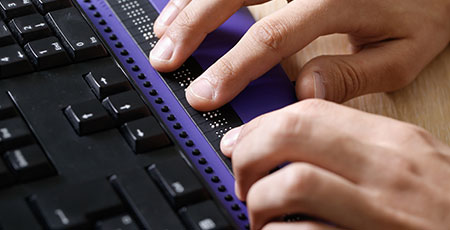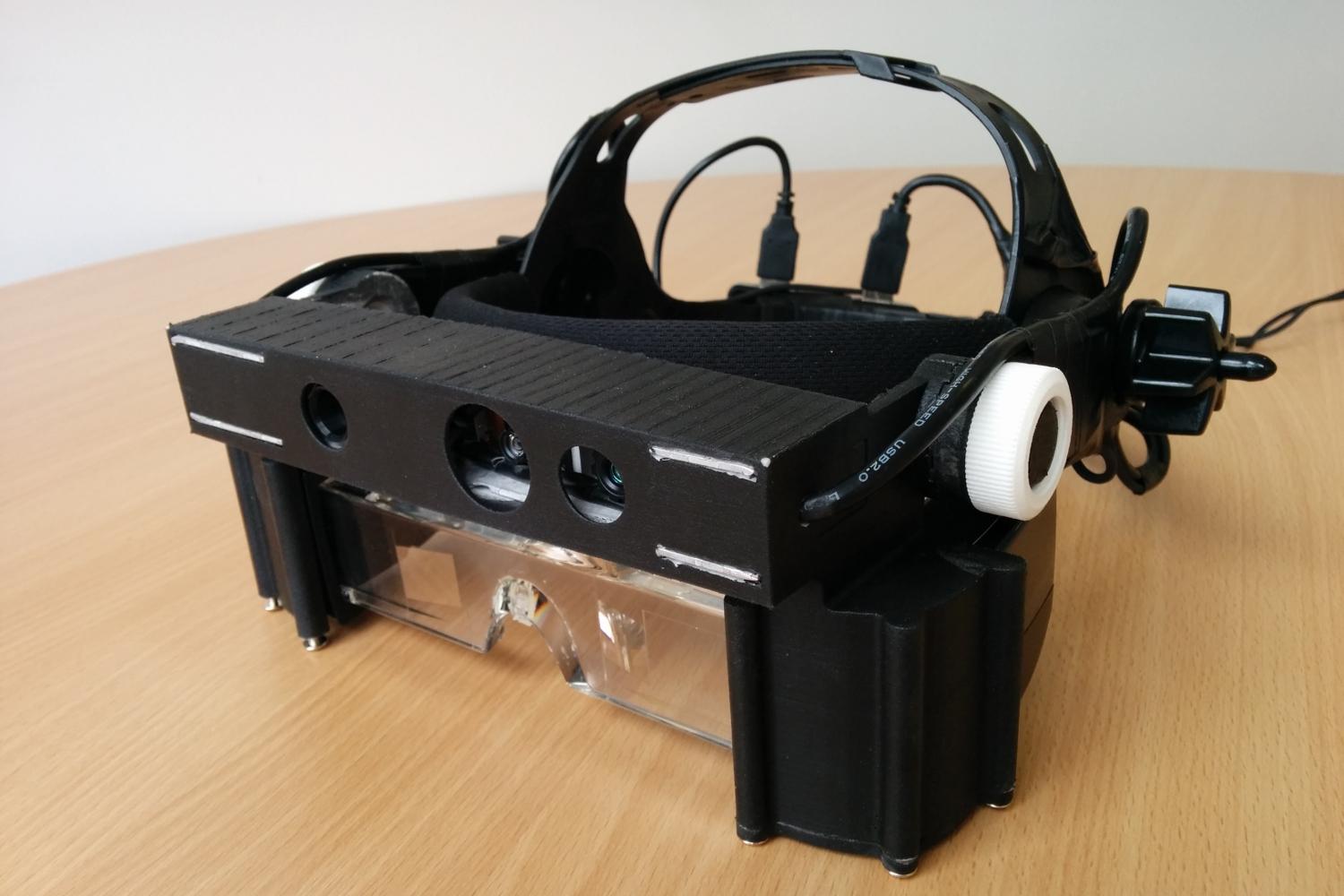Discover Ingenious Devices Developed for the Aesthetically Impaired
The growth of cutting-edge tools for the visually damaged represents a significant improvement in ease of access and independence. Technologies such as smart glasses with AI capacities and mobile applications designed to give acoustic summaries are reshaping day-to-day experiences for individuals.
Smart Glasses for Navigation

Smart glasses designed for navigation are transforming the method aesthetically damaged individuals connect with their setting. These advanced tools make use of a combination of camera modern technology, fabricated intelligence, and auditory feedback to give real-time info regarding surroundings. By utilizing obstacle detection systems, wise glasses can notify users to possible hazards, allowing much safer movement in both acquainted and unknown settings.
The assimilation of GPS technology additionally boosts navigation capacities, enabling users to get acoustic instructions as they move. This hands-free strategy not just fosters independence yet additionally equips aesthetically impaired people to navigate city landscapes with increased confidence. In addition, several smart glasses are furnished with functions that recognize sites and road indications, providing contextual information that enhances the individual experience.
Moreover, the growth of these devices is consistently progressing, with companies functioning to enhance the precision of object recognition and broaden the series of navigational features. As wise glasses become more cost effective and accessible, they hold the possible to dramatically change life for visually impaired customers. Eventually, these cutting-edge devices stand for a critical action toward inclusivity, offering boosted movement and a better sense of freedom for people browsing the globe around them.

Mobile Apps for Daily Living
Just how can mobile applications enhance the lives of visually damaged individuals? Mobile applications are reinventing the means aesthetically damaged users navigate their atmospheres, handle day-to-day tasks, and gain access to details. These applications supply essential support through numerous performances, fostering self-reliance and boosting lifestyle.
Several innovative mobile apps are developed particularly for daily living. Apps like Be My Eyes attach aesthetically damaged customers with sighted volunteers by means of video calls, permitting them to get real-time aid with tasks such as reviewing tags or browsing strange spaces. Likewise, Seeing AI, developed by Microsoft, uses expert system to define environments, checked out message, and determine things, efficiently changing a smart device into an effective device for everyday help.
In addition, navigation apps tailored for the visually impaired, such as Aira and BlindSquare, use audio-based instructions and environmental details, enabling individuals to traverse their environments securely and with confidence. Past navigating and prompt help, mobile apps also support company and job administration, with attributes that assist individuals set suggestions, produce order of business, and track consultations. In summary, mobile applications function as indispensable resources, empowering visually damaged people to lead even more independent and meeting lives.
Wearable Technologies for Support
Empowerment with modern technology is progressively evident in the realm of wearable tools created to assist visually impaired individuals. These ingenious devices integrate flawlessly into life, improving navigation and supplying crucial comments to individuals. For circumstances, wise glasses equipped with electronic cameras can read and acknowledge faces message aloud, enabling customers to engage even more confidently in social and professional settings.
One more remarkable improvement is making use of haptic comments systems in wearable tools. These systems Smart glasses for the visually impaired use vibrations or various other tactile signals to communicate information concerning the individual's environment, such as barriers or modifications in surface, enhancing mobility and safety. Wearable innovations also include wristbands that attach to smart devices, alerting customers to notifications through subtle resonances, thus boosting connectivity without dependence on aesthetic signs.
As these technologies remain to develop, they are not just improving freedom for visually damaged individuals however also fostering a greater sense of incorporation in society. By bridging the gap between challenges dealt with in everyday living and the possibility for autonomy, wearable modern technologies act as pivotal devices in the pursuit for equality and empowerment for those with aesthetic impairments.
Audio Description Tools
Sound summary tools play an important function in enhancing accessibility for aesthetically impaired people, giving them with the ability to engage with aesthetic media. Braille displays and notetakers. These devices provide narrated summaries of essential visual components in movies, tv shows, and live performances, making sure that users can completely understand the context and feelings communicated via visuals
Audio description can be incorporated right into various systems, consisting of streaming services, cinema screenings, and live movie theater. Numerous prominent streaming solutions now consist of audio summary as an access function, enabling visitors to pick it quickly. Along with mainstream media, specialized applications also exist, giving audio summaries for art exhibitions, galleries, and various other social occasions.
The effectiveness of audio description rests on the ability of the storytellers, that must communicate aesthetic information succinctly without diminishing the initial audio. Developments in this area are also leading the means for even more individualized experiences, where customers can change the level of detail and pacing according to their preferences.
Braille Innovations and Instruments
Braille advancements and gadgets have actually substantially transformed the way aesthetically impaired individuals connect with text and info. Modern improvements have led to the growth of flexible tools that improve literacy and self-reliance among customers.
Moreover, portable Braille notetakers combine conventional Braille input with contemporary performances, promoting note-taking, organizing, and paper editing on the move. AI-powered visual aids. These portable devices usually include text-to-speech capabilities, linking the gap between Braille and acoustic info
Additionally, cutting-edge Braille printers have actually emerged, allowing individuals to produce Braille tags, papers, and instructional products effectively. This ease of access promotes higher engagement in academic and specialist environments, ultimately advertising inclusivity.
Moreover, study right into wise Braille modern technologies remains to increase. Instruments that integrate fabricated intelligence are being explored to supply real-time navigation support and contextual information, enhancing the customer experience in varied setups. Generally, these technologies mirror a commitment to equipping aesthetically damaged people through modern technology, guaranteeing they can quickly accessibility and engage with the world around them.

Final Thought
The innovation of cutting-edge tools for the aesthetically damaged considerably improves self-reliance and top quality of life. Smart glasses, mobile applications, wearable modern technologies, audio summary tools, and Braille innovations collectively equip people by supplying vital navigating support, ecological awareness, and improved analysis experiences. These innovations not only foster higher inclusion yet also advertise autonomy in day-to-day activities, inevitably adding to an extra equitable and easily accessible society for visually impaired individuals. Proceeded development in this field holds guarantee for further enhancements.
As smart glasses end up being a lot more affordable and available, they hold the potential to considerably transform day-to-day life for visually impaired individuals. Mobile applications are reinventing the means visually damaged individuals browse their atmospheres, manage day-to-day tasks, and accessibility information. Applications like Be My Eyes connect visually damaged individuals with sighted volunteers via video clip calls, allowing them to get real-time assistance with jobs such as reading tags or navigating unfamiliar rooms.Furthermore, navigating applications customized for the visually damaged, such as Aira and BlindSquare, offer audio-based instructions and environmental information, making it possible for users to traverse their environments securely and with confidence.The development of ingenious tools for the aesthetically impaired considerably boosts independence and top quality of life.